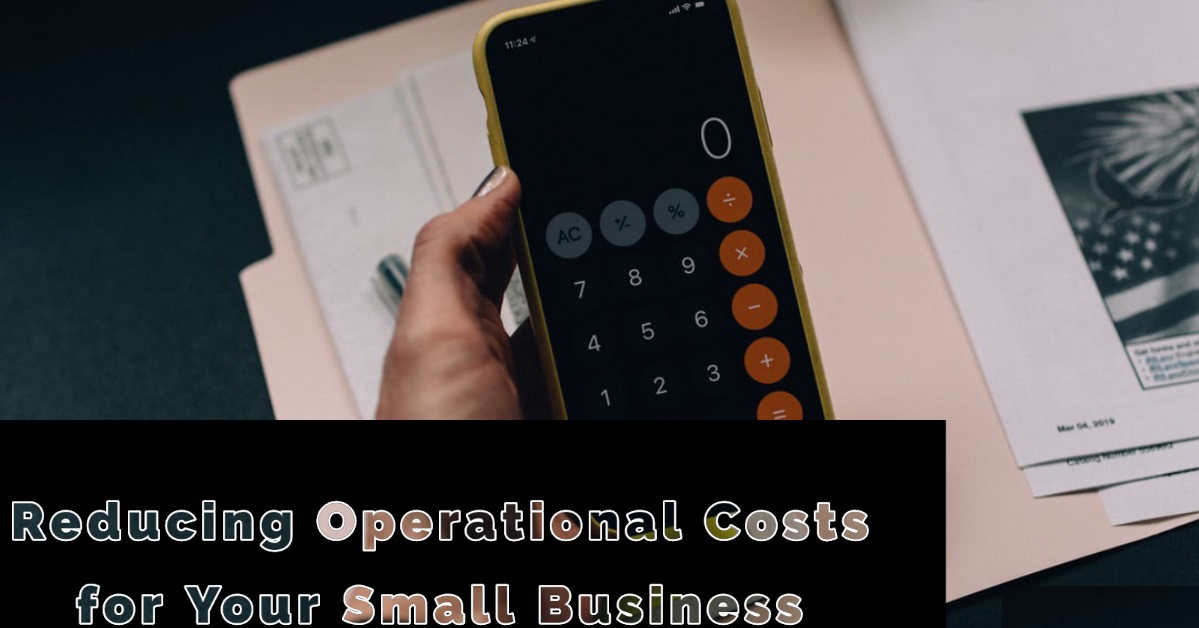Reducing Operational Costs for Your Small Business


ftp://[email protected]/
5mins Read
Regardless of what the circumstances are for your business, it is always a priority to find ways to reduce operational costs. Doing so is the most efficient and effective way to save money without necessarily harming services being rendered to customers or on salaries being paid to staff. Rather than causing problems in these areas, reducing operational costs in the right way has the additional benefit of improving business processes.
Lowering operational costs can boost your profits and improve your cash flow. What’s more, it’s important not to confuse operational with overhead costs. Operational costs are directly involved in production/ sourcing of products, Packaging, and or delivery of services, while overhead costs related to general business functions. With that in mind, here are a few ways to reduce operational costs for your small business.
Leverage on automation
The most effective way to reduce operational costs without a negative impact on the delivery of services is to bring in business process management software that automates processes that are currently being done manually.
Functions like accounting, marketing & communications, payroll, and HR, amongst others, can be at least partially automated using software programs and services, allowing staff to save time spent on these activities, thus offering cost savings for the business.
Some of the software you can use include:
- Quickbooks, for accounting
- Taxcloud for tax matters
- StoreYa, for Selling on Facebook
- Olark, for customer support
Not only does this reduce operational costs in the sense of reducing manhours spent on the tasks, but it has the additional benefit of making these functions more efficient by minimizing the risk of human error.
This means less money wasted on fixing these errors, making extra savings on top of the reduced expense of paying for the manual work. In addition, the increase in productivity from your staff after removing their repetitive tasks can help your business generate further income.
As well as automating your business processes to reduce operational costs, you should look in general at whether your processes are being managed efficiently and effectively.
Introducing business process management across the board is an excellent way to reduce costs, remove bottlenecks, improve workflow, and boost productivity as well as eliminating silo mentality. It should also make your business more agile and forward-looking, more able to respond to change and be more competitive.
Lower overhead costs
As mentioned before, overhead costs are not to be mistaken for operating costs. However, lowering overhead costs can also help you lower operating costs in the long run. If you manage to do this, you can also improve your cash flow and ensure your business stays afloat, while you wait until profits are due. Overhead costs are expenses that have nothing to do with Product sourcing, labor, and materials for the packaging of products or services.
These expenses are taxes, bills, maintenance, advertisement fees, accounting, and legal fees, telephone bills, travel expenses, and so on.
Outsource services
One of the main operational costs is having full-time staff. This is not a problem for well-developed companies with large revenue streams. However, for startups and small businesses, having full-time workers can be a major expense. Therefore, instead of hiring staff straight away, reduce operating cost by outsourcing to other companies or freelancers.
That way, you cut costs on labor and office space. For instance, you may not need full-time IT staff. Outsourcing IT services may cost you less for the purposes of your business. You can outsource marketing to others, in order to avoid having a marketing team on staff. You’ll need full-time workers eventually, but there’s no reason to increase expenses during this pandemic phase.
Lower marketing costs
Marketing can get quite expensive which is why lowering the costs of marketing can help lower operational costs as well. Fortunately, the online world provides many marketing opportunities you can use for little to no cost at all. For example, traditional marketing methods are still quite effective, but they require investment to produce.
On the other hand, email marketing and social media can cost next to nothing and are even free in some cases if you know how to handle these channels properly. Social media, for instance, allows you to market your business organically by interacting with your audience and by sharing relevant content. You can also leverage paid ads if you want to, but it’s not mandatory to produce the results you’re looking for.
Lower Store space and equipment costs
Selling online can help reduce space requirements and labor costs, but that does not mean you won’t have a few employees in your team regardless. Selling online helps reduce the required space, but you can cut those costs down even further. A good example is a remote work. With the latest computing power and fast Internet speeds, your employees can work from home as efficiently as they would work from the office.
In other words, you won’t even need a rented space to begin with, until a certain point of course. No shop space means a lack of office supply costs. Furthermore, supplies you actually need can in most part be replaced by technology. Software, such as Google Drive and other tools can help you create and store documents, as well as share them freely without the need for paper and other supplies.
Cash Management in a Crisis 101
Identify the cause of the problem
The first thing you need to do is understand what caused the problem in the first place. For instance, a major customer that hasn’t paid in time or at all, a rise in the cost of sourcing for your products or too rapid growth of your business and the inability of your infrastructure (or your re-investment fund) to keep up. Apart from this, your sales might start turning somewhat lower than what you’ve predicted or anticipated, thus making a shortage in the cash flow. Finally, there might be some unexpected expenses that you’ve failed to predict in your initial estimates. Knowing what the problem is might help you fight it.
Imagine having no money at all
Even in the moments of the greatest crisis, you still have some funds to work with; however, what would happen if you had to run a business without any cash whatsoever? Sure, in practice, this would be completely impossible, yet, it’s an interesting notion worth considering. In that case, you’d have to come up with completely cost-free business practices when it comes to marketing, employee management and customer incentives. Then, imagine if you had some resources (always fewer than you actually do have) and look into new options that would open up for you in that particular situation. Some of these techniques can be implemented right away.
Provide some additional funds
The next problem you need to understand is that no matter how reluctant you are to get deeper in debt, most methods you need to start implementing require a resource investment. This is why you need some additional funds. Creating a side-source of revenue is out of the question seeing as how it may take a lot of time while selling an asset is too risky because no one can offer you the assurance that the effort you make will actually work.
The perfect solution lies in the idea of caveat loans which are a faster and more flexible loan option. When we say flexibility, we mean that they can be as low as $1,000 and be paid off in as little as one month.
Secure internal funds
Another method that you have at your disposal is the one regarding internal funds. For instance, you might still have some supplies in stock, and selling these might be enough to cover some of your current needs. This would mean that instead of looking for a loan or coming up with new cost-free methods, all you’d have to do is find a new sales pitch or offer a particularly compelling discount/limited-time offer. Apart from this, you could also sell your invoices to a factoring company, downgrade your corporate vehicles or ask suppliers to take back excess stock. Each of these methods has their advantages, although, they aren’t without downsides either.
Reduce your overhead
In most scenarios, the reason why your business is in such bad financial shape is due to the fact that your overhead makes it difficult for you to generate profit. The best way to handle this is to look for a way to reduce it. You can start renegotiating with your suppliers, adopt more efficient business practices, consider alternative utility companies in the area, cancel your landline and much, much more. The key thing lies in figuring out which of these changes don’t reduce your productivity. Otherwise, the ROI might not be as high as you would expect.
Conclusion
Operating costs are essential to keep your business operational. However, that doesn’t mean you must waste money on these costs. Being able to lower operational costs can be a game-changer for your financial status. Not only will you be able to have more money on-hand, but you’ll also be able to invest in your business further.
The last thing you need to remember is the fact that these crisis cash management tips aren’t universally useful, same as they aren’t specific to a single type of situation. This means that once you’re out of the woods, you’ll have to abandon some of the above-listed methods in order to set out on a path of greater prosperity, while some tips may be worth keeping. Remember, a moment of crisis is not something you’ll encounter only once over the course of your career as an entrepreneur, so any crisis you manage to overcome leaves you better prepared for the next one.




















 TrustGuard - PCI Security Scanner
TrustGuard - PCI Security Scanner
